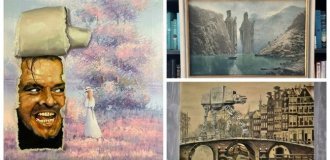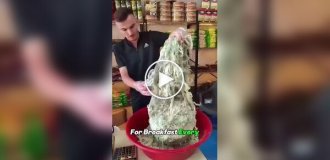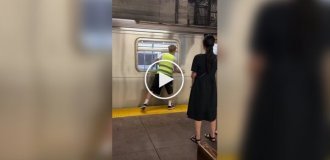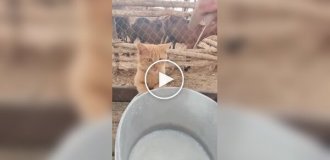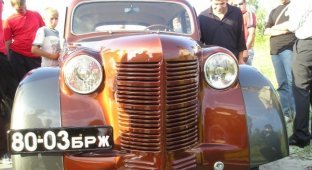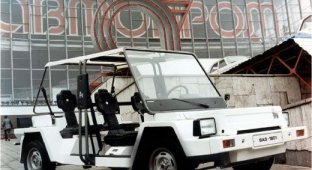Car wrapping services first appeared on the Russian market in 2004-2005. Today, car wrapping with film is a fairly common service that is offered by almost every second car workshop.

Car film, car vinyl, car wrapping, vinyl styling, car wrapping (car wrapping in English - “to wrap a car”) is a direction of external tuning, the peculiarity of which is changing the color and appearance of the car as a whole using vinyl film. Its origins are associated with the American tuning studio West Coast Customs.

Vinyl car film is durable and applies well enough to almost every surface, with the exception of soft, rough, rusty and oily surfaces.

Auto film thickness is measured in microns (µm). On average it is 100 -200 microns. Only chrome and gold car films have a smaller thickness - from 40 to 70 microns and, as a result, have poor stretch, which makes car wrapping much more difficult.

Autovinyl directions
Vinylography (airbrushing with film) is an alternative to airbrushing. Vinylography is created by applying an image to a transparent vinyl film, followed by lamination (application of a transparent film to protect the printed image) and pasting the car body. The drawing is applied using large-format printing on a plotter.

Full car wrapping with film is an alternative to painting. The film covers all elements of the car body. The car must be prepared as for painting. There is a wide range of colors and shades of films from different manufacturers. Films are also divided into matte, glossy, textured, etc. In addition, full wrapping with white vinyl film with printing and subsequent lamination of the ornament is popular. (Camouflage, etc.)

Partial car wrapping with vinyl - wrapping individual parts of the car with a 3D carbon film, matte or glossy car film (hood, roof, trunk, spoiler, mirrors). This type of pasting is the most economical type of tuning, primarily due to the use of a small amount of material.

Lamination and armoring of a car with film is carried out using special transparent films. Lamination is used to protect the paintwork of a car from minor scratches, chips and other environmental influences. As a rule, the thickness of the auto film for lamination ranges from 80 to 100 microns and with high-quality pasting it is practically invisible. The polyurethane (anti-gravel) protective film is thick and has shock-absorbing properties.

Anti-gravel film (car protective film) is much more expensive and is mainly used to protect optics, bumpers, sills, etc. Auto styling is a vinyl car wrap that combines different types of wraps to create a single theme. Printed images can be applied to some car body parts, while others can be created using plotter cutting. The design studio develops a layout of the entire work, followed by production and pasting.

Recommendations after car wrapping
It is advisable that after wrapping the car stand in the same room for at least 3 days. After wrapping your car, you need to wash it no earlier than a week later.

Auto vinyl: pros and cons
The advantages of car film are, of course, the bling appearance of your car, protection from small chips and scratches, and protection of paint from fading. Disadvantages of auto film - if not properly applied, it can peel off in some places, especially in places where there is strong tension when exposed to direct sunlight. If the car film has a different color from the body color, then it must be registered in the registration certificate as a new car color.

Leading manufacturers of auto films
Leading manufacturers of auto vinyl include such companies as 3M (Japan), APA (Italy), Avery (Holland), Bruxofol (Germany), Hexis (France), KPMF (England). The product range of these companies includes: matte car film, chrome car film, carbon car film

How much does it cost to wrap a car with film?!
Prices for wrapping a car with vinyl vary quite a lot and average 70-100 dollars per m2 including material and labor. Such a high cost of wrapping a car with film is associated with the need to prepare the car - partial disassembly and preparation of the body surface for wrapping, plus the rather painstaking work of the craftsman. Of course, the option is to buy car film for wrapping a car in an online store (which is not a problem) and then cover the car with the film yourself, but as practice shows, first you need to practice, since it is not as easy as it may seem on the market. first glance.


